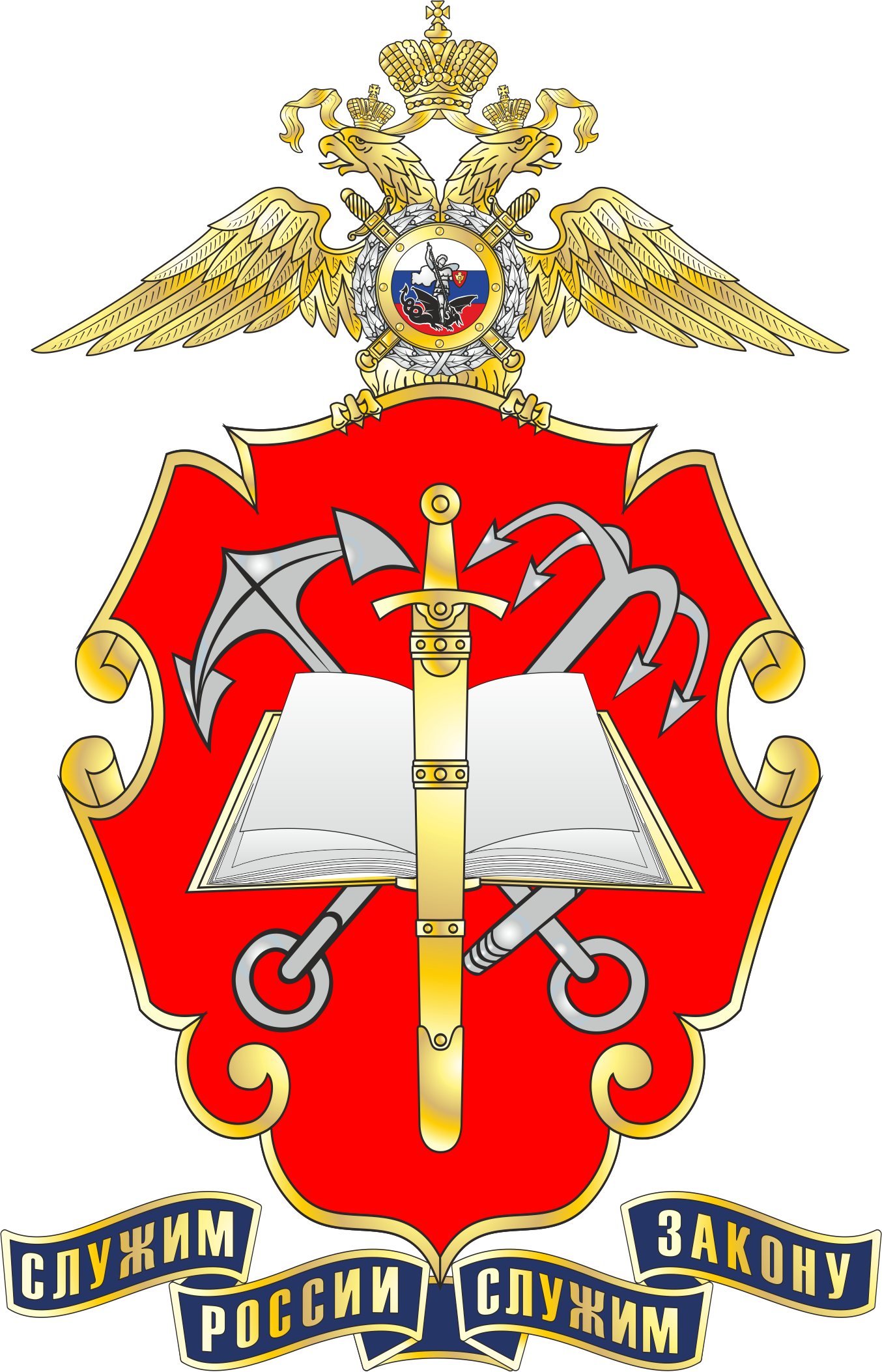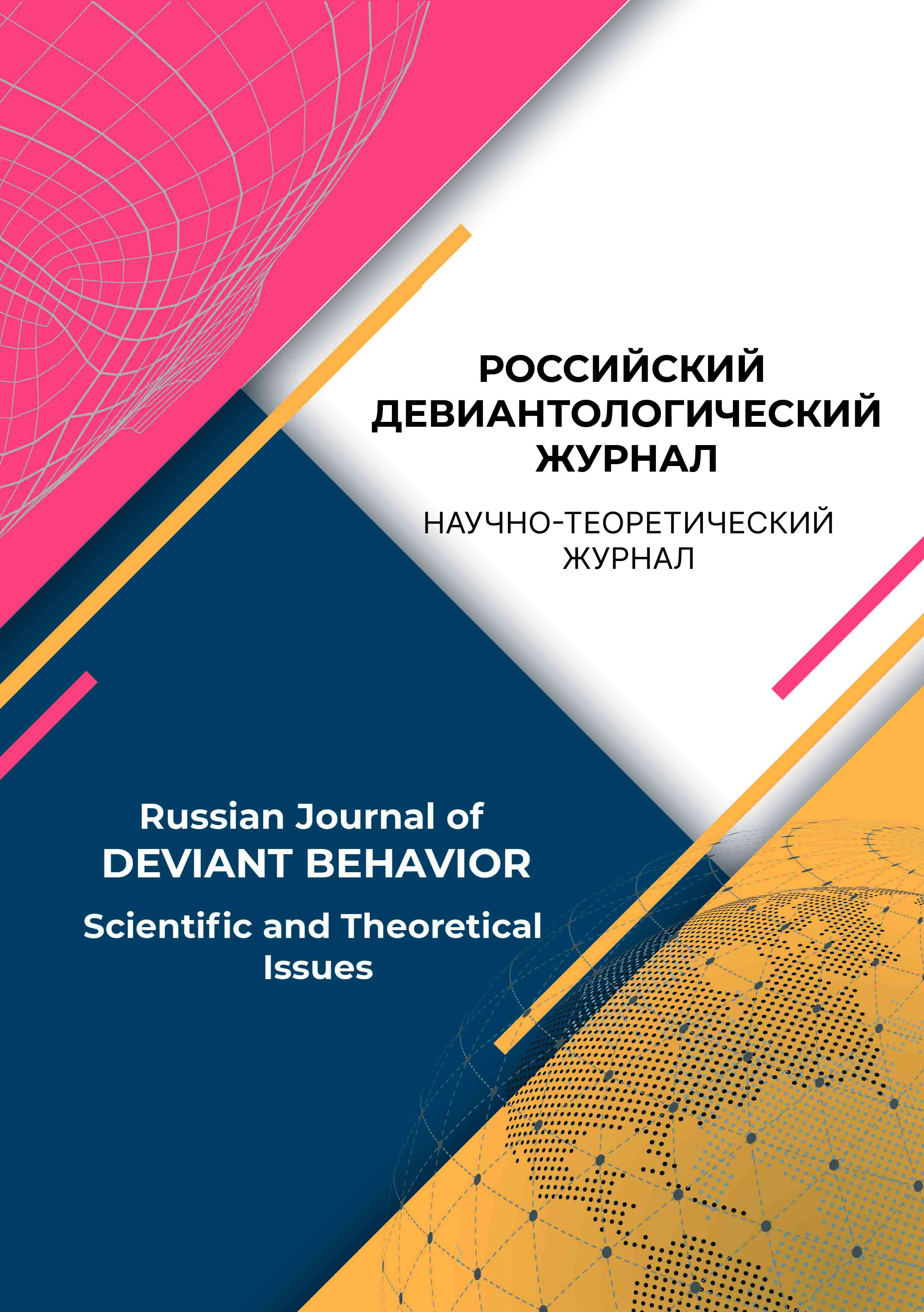from 01.01.2016 to 01.01.2024
St. Petersburg, Russian Federation
UDC 159.9.07
UDC 316.62
Introduction. Problems of being systematically late, neglecting the orders of the organization and the authorities,red tape, forgery of documents, mobbing, etc. are common to varying degrees in public and commercial organizations.The researchers examine the phenomenon of ‘counterproductive behaviour’ comprising of the forms of behaviour that deviate from the norms and ethical principles recognised by the organisation. The assessment and forecasting of counterproductive dynamics in law enforcement teams serves the purpose of increasing the efficiency of professional activities, improving the image of law enforcement agencies, preventing corruption and other offences, and preventing destructive behaviour. Research Methods. Analysis of the psychosemantic experiment procedures proposed by V.F. Petrenko was used to develop the authors’ psychosemantic methodology to identify the risk of counterproductive behaviour of law enforcement officers. The methods of expert assessment, content analysis and testing (questionnaire “Individual Performance”, questionnaire “Dark Triad”) were also used. Mathematical and statistical processing of the study results was carried out by means of Microsoft Office Excel 2015 and statistical programme SPSSv.22. The validity of the obtained statistical data was assessed with the indicator of significance of differences. The results above the significance level (0.01 < p) and (0.001 < p) were interpreted. Results. The paper analyses theoretical and methodological approaches to the study of counterproductive behaviour. The authors justify the necessity of studying the distinctive forms of counterproductive behaviour in the context of professional activity, including law enforcement officers’duties. According to the expert sample of the original methodology, the list of actions (32 in total) fully characterises the particular forms of counterproductive behaviour typical for the officers of the Ministry of Internal Affairs of the Republic of Uzbekistan and corresponds to the condition to represent equally the forms of violation of social and organisational norms of behaviour among law enforcers. The full list of counterproductive actions committed by law enforcement officers, as presented by the respondents of the Ministry of Internal Affairs of the Republic of Uzbekistan, is divided into: 1) assessed neutrally; 2) assessed negatively but carried out regularly; 3) assessed as unacceptable. The psychosemantic basics of categorisation of counterproductive actions can serve as markers of the level of development of professional consciousness of a particular law enforcer and the level of development of organisational culture in a particular unit.
counterproductive behaviour, counterproductive actions, counterproductive tends, assessment, prediction
1. Egorova, M., Sitnikova, M., & Parshikova, O. (2015). Adaptaciya Korotkogo oprosnika Temnoj triady. Psihologicheskie issledovaniya, 8 (43). https://doi.org/10.54359/ps.v8i43.1052
2. Ivanova, A. M., Kodirkulov, A. S. (2024). Organizacionnaya kul'tura i kontrproduktivnoe povedenie sotrudnikov policii. Chelovecheskij kapital, 4 (184), 147–155. https://doi.org/10.25629/ HC.2024.04.15
3. Petrenko, V. F. (1988). Psihosemantika soznaniya. Moskow: Izdatel'stvo Moskovskogo universiteta.
4. Rudnova, N., & Kornienko, D. (2022). Psihometricheskie harakteristiki oprosnika «Individual'noe vypolnenie raboty». Psihologicheskie issledovaniya, 15 (84), 1. https://doi.org/10.54359/ ps.v15i84.1171
5. Brender-Ilan, Y, Sheafer, Z. (2019). How do self-efcacy, narcissism and autonomy mediate the link between destructive leadership and counterproductive work behaviour. Asia Pac Manag Rev, 24 (3), 212–222. https://doi.org/10.1016/j.apmrv.2018.05.003
6. Gundhus, H. O., Talberg, O. N., & Wathne, C. T. (2022). False Reporting in the Norwegian Police: Analyzing Counter-productive Elements in Performance Management Systems. Criminal Justice Ethics, 41, 191–214. https://doi.org/10.1080/0731129X.2022.2146321
7. Kehr, H. M. (2004). Integrating implicit motives, explicit motives, and perceived abilities: The compensatory model of work motivation and volition. Academy of Management Review, 29, 479–499.
8. Lee, S. B., Liu, S. H., & Maertz, C. (2022). The relative impact of employees’ discrete emotions on employees’ negative word-of-mouth (NWOM) and counterproductive workplace behavior (CWB). The Journal of Product & Brand Management, 31 (7), 1018–1032. https://doi.org/10.1108/JPBM-07-2021-3555
9. Li, S., & Chen, Y. (2018). The Relationship Between Psychological Contract Breach and Employees’ Counterproductive Work Behaviors: The Mediating Effect of Organizational Cynicism and Work Alienation. Frontiers in Psychology, 9, 1273. https://doi.org/10.3389/fpsyg.2018.01273
10. López-Cabarcos, M. Á., López-Carballeira, A., & Ferro-Soto, C. (2023). How to Prevent Hostile Behaviors and Emotional Exhaustion among Law Enforcement Professionals: The Negative Spiral of Role Conflict. International Journal of Environmental Research and Public Health, 20 (1), 863. https://doi.org/10.3390/ijerph20010863
11. Low, Y. M., Sambasivan, M., & Ho, J. A. (2019). Impact of abusive supervision on counterproductive work behaviors of nurses. Asia Pacific Journal of Human Resources, 59 (2), 250–278. https://doi.org/10.1111/1744-7941.12234
12. Mehmood, S. A., Malik, A. R., Nadarajah, D., & Saood Akhtar, M. (2023). A moderated mediation model of counterproductive work behaviour, organisational justice, organisational embeddedness and psychological ownership. Personnel Review, 52 (1), 183–199. https://doi.org/10.1108/ PR-05-2021-0330
13. Miao, Y., Wang, J., Shen, R., & Wang, D. (2023). Effects of Big Five, HEXACO, and Dark Triad on Counterproductive Work Behaviors: A Meta-Analysis. International Journal of Mental Health Promotion, 25 (3). https://doi.org/10.32604/ijmhp.2023.027950
14. Murad, M., Jiatong, W., Shahzad, F., & Syed, N. (2021). The influence of despotic leadership on counterproductive work behavior among police personnel: Role of emotional exhaustion and organizational cynicism. J. Police Crim. Psychol., 36, 603–615. https://doi.org/10.1007/s11896-021-09470-x
15. OBoyle, E. H., Forsyth, D. R., Banks, G. C., & McDaniel, M. A. (2012). A meta-analysis of the Dark Triad and work behavior: A social exchange perspective. Journal of Applied Psychology, 97, 557–579. https://doi.org/10.1037/a0025679
16. O’Brien, K. E., Henson, J. A., & Voss, B. E. (2021). A trait-interactionist approach to understanding the role of stressors in the personality–CWB relationship. Journal of Occupational Health Psychol¬ogy, 26 (4), 350–360. https://doi.org/10.1037/ocp0000274
17. Palmer, J. C., Komarraju, M., Carter, M. Z., & Karau, S. J. (2017). Angel on one shoulder: Can perceived organizational support moderate the relationship between the Dark Triad traits and counter¬productive work behavior? Personality and Individual Differences, 110 (1), 31–37. https://doi. org/10.1016/j.paid.2017.01.018
18. Penney, L. M., Spector, P. E., & Fox, S. (2003). Stress, Personality and Counterproductive Work Behaviour. In: Sagie, A., Stashevsky, S., Koslowsky, M. (eds), Misbehaviour and Dysfunctional Attitudes in Organizations. Palgrave Macmillan, London. https://doi.org/10.1057/9780230288829_11
19. Rengifo, M., & Laham, S. M. (2022). Big Five personality predictors of moral disengagement: A comprehensive aspect-level approach. Personality and Individual Differences, 184, 111176. https://doi.org/10.1016/j.paid.2021.111176
20. Schlosser, L. Z., & Coghlan, T. E. (May 17, 2023). “Officer Self-Sabotage”. Police Chief Online. https://www.policechiefmagazine.org/officer-self-sabotage/?ref=479bd9c84e367d8642bd0e22ce9bf70e
21. Schyns, B. (2015). Dark personality in the workplace: Introduction to the special issue. Applied Psychology: An International Review, 64 (1), 1–14. https://doi.org/10.1111/apps.12041
22. Spain, S. M., Harms, P., & LeBreton, J. M. (2014). The dark side of personality at work. Journal of Organizational Behavior, 35 (S1), S41–S60. https://doi.org/10.1002/job.1894
23. Spanouli, A., Hofmans, J., & Dalal, R. S. (2023). Coping with daily boredom: Exploring the relationships of job boredom, counterproductive work behavior, organizational citizenship behavior, and cognitive reappraisal. Motiv Emot, 47, 810–827. https://doi.org/10.1007/s11031-023-10017-2
24. Striler, J., Shoss, M., & Jex, S. (2021). The relationship between stressors of temporary work and counterproductive work behaviour. Stress and Health, 37 (2), 329–340. https://doi.org/10.1002/smi.2998
25. Suroso, A., Gal, T., & Anggraeni, A. I. (2020). Work Stress and Counterproductive Work Behavior. International Journal of Innovation, Creativity and Change, 14 (12).
26. Suseno, Y., Chang, C., Hudik, M., et al. (2021). Why do employees engage in counterproductive work behaviours? Cultural values and white-collar employees in China. Motiv Emot, 45, 397–421. https://doi.org/10.1007/s11031-021-09874-6
27. Suyasa, P. T. Y. (2017). The Role of Quality of Work Life as a Predictor of Counterproductive Work Behavior. ANIMA Indonesian Psychological Journal, 32 (3), 169–183. https://doi.org/10.24123/ aipj.v32i3.631
28. Zheng, J. (2019). "Predicting Counterproductive Work Behavior with Explicit and Implicit Measures of Conscientiousness, Agreeableness, and Emotional Stability". Electronic Theses and Disserta¬tions, 6329. https://stars.library.ucf.edu/etd/6329













